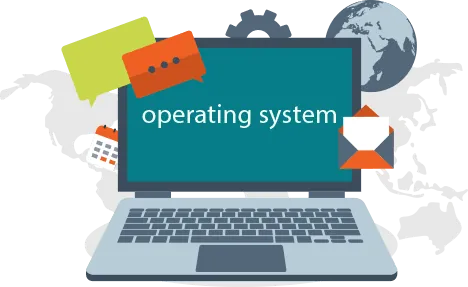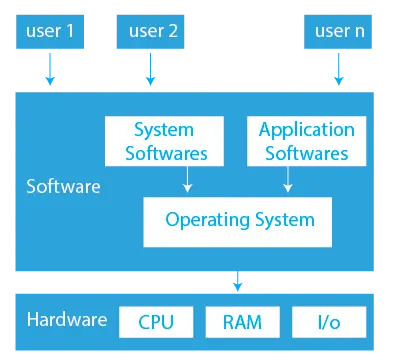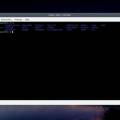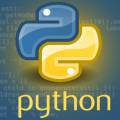In this post we will learn basic of operating system also known as “OS”, definition and function of an operating system (OS). Some of definition of an operation system given below
 Operating system Definition :
Operating system Definition :
“An Operating System (OS) is system software that manages computer hardware and software resources, and provides common services for computer programs “.
“An Operating System (OS) is an interface between a computer user and computer hardware. An operating system is a software which performs all the basic tasks like file management, memory management, process management, handling input and output, and controlling peripheral devices such as disk drives and printers”.
 Objectives of Operating Systems
Objectives of Operating Systems
- Efficiency
- Hardware abstraction
- Convenience
- System resource management
Functions of an Operating Systems
- Resource Management: The operating system manages and allocates memory, CPU time, and other hardware resources among the various programs and processes running on the computer.
- Process Scheduling: It is the process of determining which processes should be executed at which given time. The operating system must take into several factors for scheduling the process, such as the priority of the processes, the amount of CPU time they need, and the availability of resources.
- Memory Management: The operating system manages the computer’s primary memory and provides mechanisms for optimizing memory usage.
- Security & Access Control: It is the process of protecting the computer system from unauthorized access and malicious attacks. The operating system must ensure that only authorized users can access the system and that only authorized users can perform certain actions
- Performance Monitoring: The operating system provides tools for monitoring and optimizing system performance, including identifying bottlenecks, optimizing resource usage, and analyzing system logs and metrics.
- Error Detection & Recovery: It is the process of detecting and recovering from errors. The operating system must detect errors such as hardware failures, software bugs, and user errors. It must also recover from these errors in a way that minimizes data loss and system downtime.
- Inter process Communication: It is the process of allowing different processes to communicate with each other. The operating system must provide mechanisms for processes to share data and resources and coordinate their activities.
- Virtualization: The operating system provides virtualization capabilities that allow multiple operating systems or applications to run on a single physical machine. This can enable efficient use of resources and flexibility in managing workloads.
Below are the commonly used operating system:
- Linux (Ubuntu, OpenSuse, Fedora, Garuda, BOSS) is a free and open-source operating system and is used by millions of people around the world. It is known for its stability, security, and flexibility. Linux is a popular choice for servers, embedded systems, and personal computers
- Windows(Windows XP, Windows 7, Windows 10 and Windows 11) is a proprietary operating system which is developed and sold by Microsoft. It is the most popular operating system in the world, used by billions of people. Windows is known for its user-friendliness and wide range of software applications
- MacOS is a proprietary operating system which is developed and sold by Apple. It is based on the Unix operating system and is known for its stability, performance, and design. macOS is the operating system of choice for Apple’s Mac computers.












